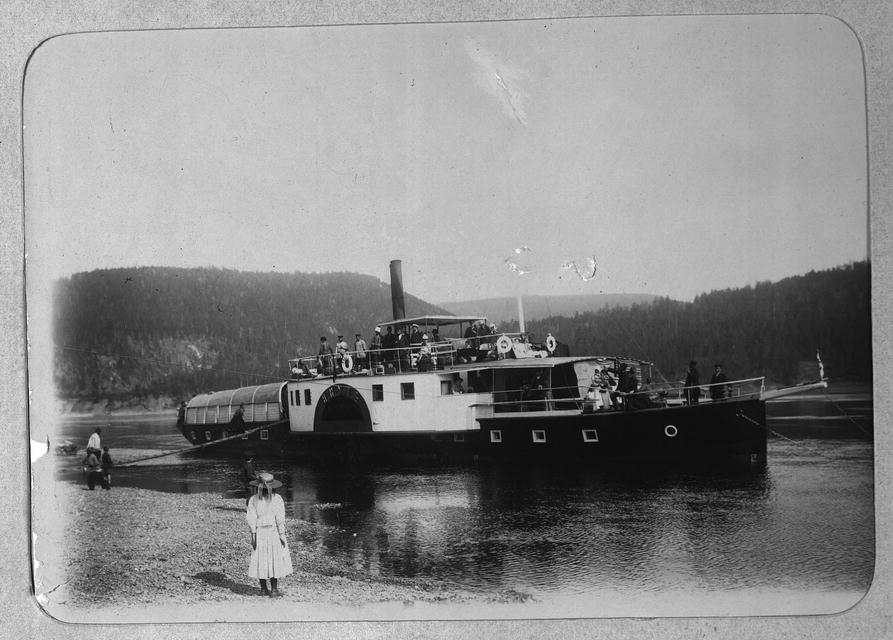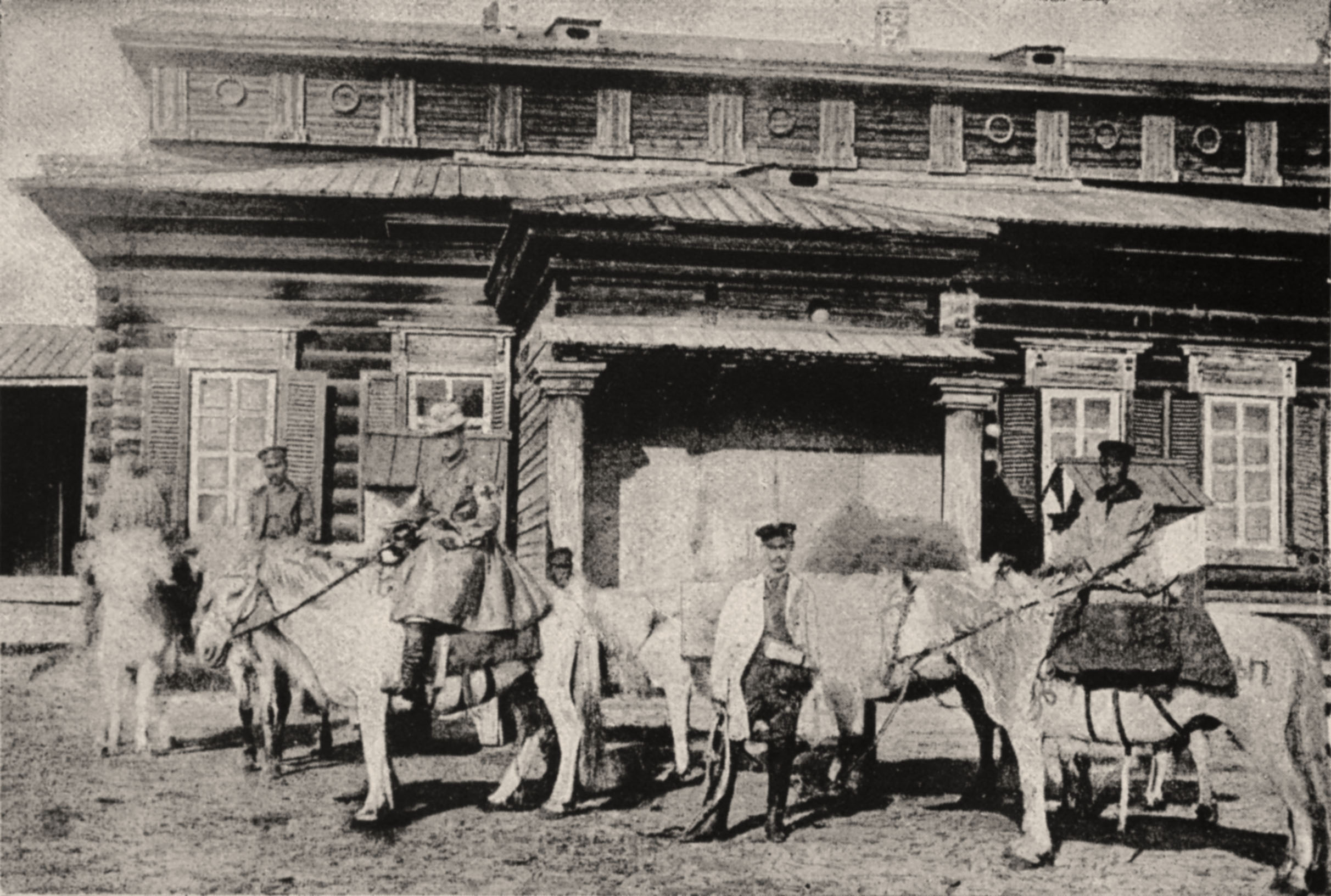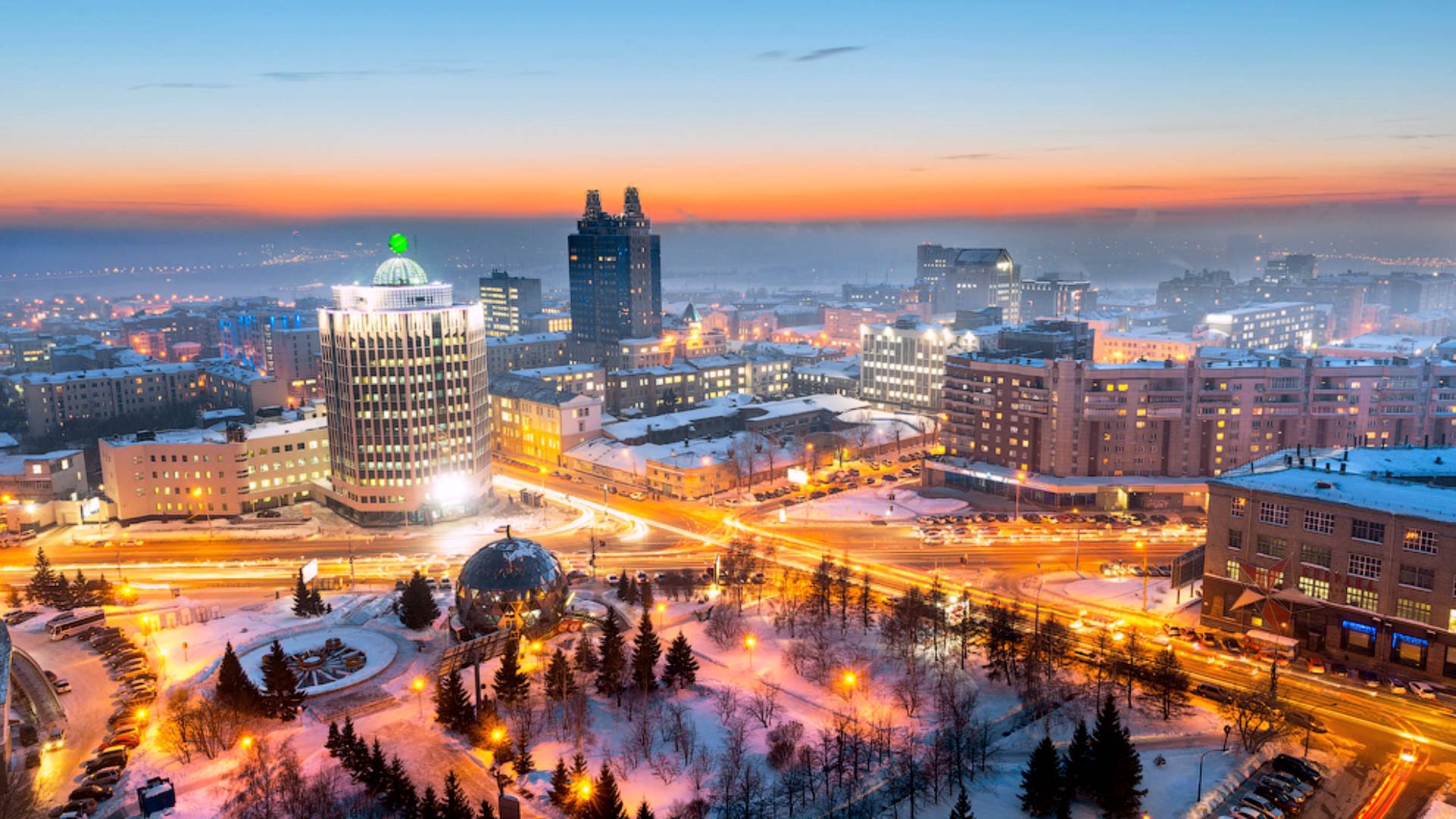|
Mondo Enduro
Mondo Enduro was a round-the-world adventure motorcycle expedition in 1995-1996. Team members Austin Vince, Gerald Vince, Chas Penty, Bill Penty, Clive Greenhough, Nick Stubley and Mark Friend set off to go round the world by the longest route possible in the shortest time on Suzuki DR350 Dual Sport bikes. Their route took them from London, through Central Asia, Kazakhstan and Siberia; then from Alaska to Chile and finally from Cape Town through Africa and the Middle East back to London. The expedition was filmed and was subsequently made into a 2-part TV series. Shown on Discovery Travel and Adventure Channel over 40 times, this has since reached cult status amongst biking and adventure travel fans. The real difficulties in the expedition came in the Zilov Gap, the 400 mile roadless section in Siberia. The team got bogged down here and eventually ended up taking the Trans-Siberian railroad to circumvent the last 100 miles of the Zilov Gap. As well as a cult TV show and DVD, ... [...More Info...] [...Related Items...] OR: [Wikipedia] [Google] [Baidu] |
Austin Vince
Austin Vince is best known for his long distance adventure motorcycle expeditions: twice round the world as part of the Mondo Enduro and Terra Circa trips, which were both produced as TV documentaries. As well as presenting the ''Mondo Enduro'' and co-presenting the ''Terra Circa'' TV programmes, Vince has also written and presented the ''Routes'' series on Discovery Channel. Latterly he played the maths teacher in the first two series of Channel 4's ''That'll Teach 'Em'' and has in the past taught at St. Johns Northwood as a maths teacher. He has also served in the Royal Engineers. Vince attended the private Mill Hill School in North London London is the Capital city, capital and List of urban areas in the United Kingdom, largest city of both England and the United Kingdom, with a population of in . London metropolitan area, Its wider metropolitan area is the largest in Wester ... then was sponsored through university by the army but became a pacifist while there and h ... [...More Info...] [...Related Items...] OR: [Wikipedia] [Google] [Baidu] |
Bukhara
Bukhara ( ) is the List of cities in Uzbekistan, seventh-largest city in Uzbekistan by population, with 280,187 residents . It is the capital of Bukhara Region. People have inhabited the region around Bukhara for at least five millennia, and the city has existed for half that time. Located on the Silk Road, the city has long served as a center of trade, scholarship, culture, and religion. Bukhara served as the capital of the Khanate of Bukhara, Emirate of Bukhara and later Bukhara People’s Soviet Republic. It was the birthplace of the scholar Imam Bukhari. The city has been known as "Noble Bukhara" (''Bukhārā-ye sharīf''). Bukhara has about 140 architectural monuments. UNESCO has listed the historic center of Bukhara (which contains numerous mosques and madrasas) as a List of World Heritage Sites in Uzbekistan, World Heritage Site. Names The exact name of the city of Bukhara in ancient times is unknown. The whole Oasis of Bukhara, oasis was called Bukhara in ancient times, ... [...More Info...] [...Related Items...] OR: [Wikipedia] [Google] [Baidu] |
Vancouver
Vancouver is a major city in Western Canada, located in the Lower Mainland region of British Columbia. As the List of cities in British Columbia, most populous city in the province, the 2021 Canadian census recorded 662,248 people in the city, up from 631,486 in 2016. The Metro Vancouver area had a population of 2.6million in 2021, making it the List of census metropolitan areas and agglomerations in Canada#List, third-largest metropolitan area in Canada. Greater Vancouver, along with the Fraser Valley, comprises the Lower Mainland with a regional population of over 3million. Vancouver has the highest population density in Canada, with over , and the fourth highest in North America (after New York City, San Francisco, and Mexico City). Vancouver is one of the most Ethnic origins of people in Canada, ethnically and Languages of Canada, linguistically diverse cities in Canada: 49.3 percent of its residents are not native English speakers, 47.8 percent are native speakers of nei ... [...More Info...] [...Related Items...] OR: [Wikipedia] [Google] [Baidu] |
Anchorage
Anchorage, officially the Municipality of Anchorage, is the most populous city in the U.S. state of Alaska. With a population of 291,247 at the 2020 census, it contains nearly 40 percent of the state's population. The Anchorage metropolitan area, which includes Anchorage and the neighboring Matanuska-Susitna Borough, had a population of 398,328 in 2020, accounting for more than half the state's population. At of land area, the city is the fourth-largest by area in the U.S. Anchorage is in Southcentral Alaska, at the terminus of the Cook Inlet, on a peninsula formed by the Knik Arm to the north and the Turnagain Arm to the south. First settled as a tent city near the mouth of Ship Creek in 1915 when construction on the Alaska Railroad began, Anchorage was incorporated as a city in November 1920. In September 1975, the City of Anchorage merged with the Greater Anchorage Area Borough, creating the Municipality of Anchorage. The municipal city limits span , encompassin ... [...More Info...] [...Related Items...] OR: [Wikipedia] [Google] [Baidu] |
Lena River
The Lena is a river in the Russian Far East and is the easternmost river of the three great rivers of Siberia which flow into the Arctic Ocean, the others being Ob (river), Ob and Yenisey. The Lena River is long and has a capacious drainage basin of ; thus the Lena is the list of rivers by length, eleventh-longest river in the world and the longest river entirely within Russia. Geographically, permafrost underlies all the Lena River's catchment and it is continuous in over 75 percent of the basin. Course The Lena originates at of elevation in the Baikal Mountains, west of Lake Baikal, south of the Central Siberian Plateau. The Lena flows north-east and traverses the Lena-Angara Plateau, then is joined by three tributary rivers: (i) the Kirenga, (ii) the Vitim (river), Vitim, and (iii) the Olyokma. From Yakutsk, the Lena River enters the Central Yakutian Lowland and flows north until joined by the eastern tributary, the Aldan (river), Aldan River, and the western tributary, the ... [...More Info...] [...Related Items...] OR: [Wikipedia] [Google] [Baidu] |
Magadan
Magadan ( rus, Магадан, p=məɡɐˈdan) is a Port of Magadan, port types of inhabited localities in Russia, town and the administrative centre of Magadan Oblast, Russia. The city is located on the isthmus of the Staritsky Peninsula by the Nagaev Bay; it serves as a gateway to the Kolyma region. Magadan, founded in 1929, was a major transit centre for political prisoners during the Stalin era and the administrative centre of the Dalstroy forced-labor gold-mining operation. The town later served as a port for exporting gold and other metals. Magadan plays a significant role in transportation with the Port of Magadan and Sokol Airport. The local economy relies on gold mining and fisheries, although gold production has declined. The town has various cultural institutions and religious establishments, such as the Orthodox and the Roman Catholic Church of the Nativity (Magadan), Church of the Nativity. The Mask of Sorrow memorial commemorates Stalin's victims. Magadan experien ... [...More Info...] [...Related Items...] OR: [Wikipedia] [Google] [Baidu] |
Khandyga
Khandyga (; , ''Xaandıga'') is an urban locality (an urban-type settlement) and the administrative center of Tomponsky District in the Sakha Republic, Russia, northeast of Yakutsk, the capital of the republic. As of the 2010 Census, its population was 6,638. Geography Khandyga is located on the northeast corner of the Aldan River, by a bend where the river turns from north to west. The R504 Kolyma Highway passes through the town and the Ulakhan-Bom and Sette-Daban mountain ranges rise to the east. History It was founded in 1938 as a base for the construction of the Kolyma Highway towards Magadan. During World War II, an airfield was built here for the Alaska-Siberian air route used to ferry American Lend-Lease aircraft to the Eastern Front.Lebedev, pp. 44–49 From 1951 until 1954, it served as a base for Yanstroy forced-labor camp of the gulag network. In 1954, Khandyga became the administrative center of Tomponsky District. It was granted urban-type settlement ... [...More Info...] [...Related Items...] OR: [Wikipedia] [Google] [Baidu] |
Yakutsk
Yakutsk ( ) is the capital and largest city of Sakha, Russia, located about south of the Arctic Circle. Fueled by the mining industry, Yakutsk has become one of Russia's most rapidly growing regional cities, with a population of 355,443 at the 2021 census. Yakutsk has an average annual temperature of , winter high temperatures consistently well below , and a record low of has been recorded.Погода в Якутске. Температура воздуха и осадки. Июль 2001 г. (in Russian) As a result, Yakutsk is the coldest ''major city'' in the world (although a number of smaller towns in that region are slightly colder). Yakutsk is also the largest city located in [...More Info...] [...Related Items...] OR: [Wikipedia] [Google] [Baidu] |
Skovorodino, Amur Oblast
Skovorodino () is a town and the administrative center of Skovorodinsky District of Amur Oblast, Russia, located in the upper stream of the Bolshoy Never River northwest of Blagoveshchensk, the administrative center of the oblast. Skovorodino is located from the border with Heilongjiang, China. Population: Geography The nearest significant town is Tynda, about to the north on the Baikal-Amur Mainline. History It was founded in 1908 as the settlement of Zmeiny () during the construction of the Trans-Siberian Railway. It was then renamed Never-1 () after the nearby river. In 1911, it was once again renamed and became Rukhlovo (). It was granted town status in 1927. In 1938, it was renamed Skovorodino in honor of A.N.Skovorodin (1890–1920), chairman of a local soviet, who had been killed here during the Russian Civil War. There is a myth that it was named after a frying pan factory ordered by Stalin (), which is not correct. Administrative and municipal status ... [...More Info...] [...Related Items...] OR: [Wikipedia] [Google] [Baidu] |
Irkutsk
Irkutsk ( ; rus, Иркутск, p=ɪrˈkutsk; Buryat language, Buryat and , ''Erhüü'', ) is the largest city and administrative center of Irkutsk Oblast, Russia. With a population of 587,891 Irkutsk is the List of cities and towns in Russia by population, 25th-largest city in Russia by population, the fifth-largest in the Siberian Federal District, and one of the largest types of inhabited localities in Russia, cities in Siberia. Located in the south of the eponymous oblast, the city proper lies on the Angara River, a tributary of the Yenisei River, Yenisei, about 850 kilometres (530 mi) to the south-east of Krasnoyarsk and about 520 kilometres (320 mi) north of Ulaanbaatar. The Trans-Siberian Highway (Federal M53 and M55 Highways) and Trans-Siberian Railway connect Irkutsk to other regions in Russia and Mongolia. Many distinguished Russians were sent into exile in Irkutsk for their part in the Decembrist revolt of 1825, and the city became an exile-post for the ... [...More Info...] [...Related Items...] OR: [Wikipedia] [Google] [Baidu] |
Novosibirsk
Novosibirsk is the largest city and administrative centre of Novosibirsk Oblast and the Siberian Federal District in Russia. As of the 2021 Russian census, 2021 census, it had a population of 1,633,595, making it the most populous city in Siberia and the list of cities and towns in Russia by population, third-most populous city in Russia after Moscow and Saint Petersburg. Additionally, it is the largest city in the Asian part of Russia and the most populous city in the country that does not have the status of a Federal subjects of Russia, federal subject. Novosibirsk is located in southwestern Siberia, on the banks of the Ob River. Novosibirsk was founded in 1893 on the Ob River crossing point of the future Trans-Siberian Railway, where the Novosibirsk Rail Bridge was constructed. Originally named Novonikolayevsk ("New Nicholas") in honor of Nicholas II of Russia, Emperor Nicholas II, the city rapidly grew into a major transport, commercial, and industrial hub. Novosibirsk was r ... [...More Info...] [...Related Items...] OR: [Wikipedia] [Google] [Baidu] |
Iskitim
Iskitim () is a town in Novosibirsk Oblast, Russia, located on the Berd River. Population: History In 1717, four villages were documented on the site of the future city: Koinovo, Shipunovo, Chernodyrovo and Vylkovo. In 1929, deposits of limestone and shale were found in this place, after which a special commission determined the site for the construction of a cement plant. In 1933, the working settlement of Iskitim was formed, and the following year the cement plant was built. In 1938, Iskitim received city status. Administrative and municipal status Within the framework of administrative divisions, Iskitim serves as the administrative center of Iskitimsky District, even though it is not a part of it. As an administrative division, it is incorporated separately as the Town of Iskitim—an administrative unit with the status equal to that of the districts. As a municipal division, the Town of Iskitim is incorporated as Iskitim Urban Okrug.Law #200-OZ Demographics and cri ... [...More Info...] [...Related Items...] OR: [Wikipedia] [Google] [Baidu] |






